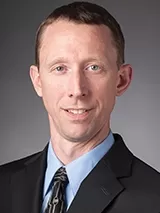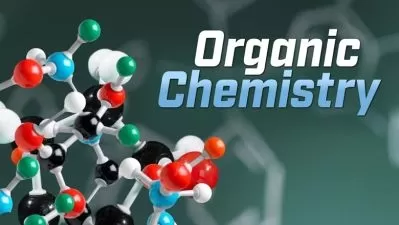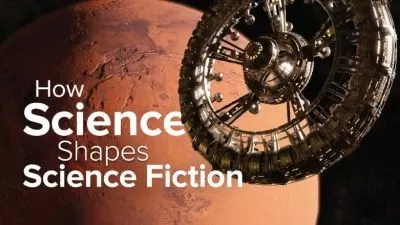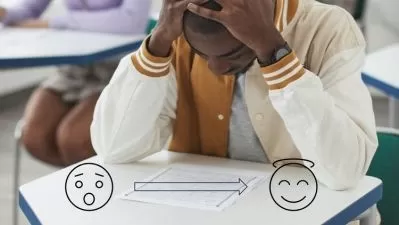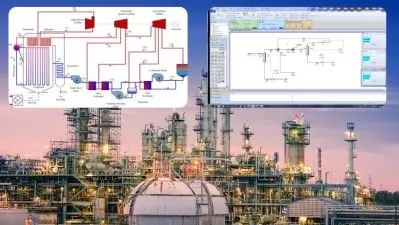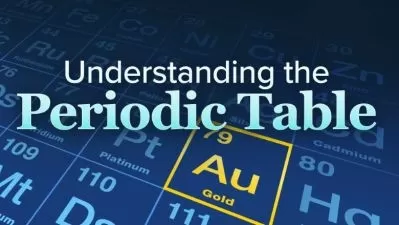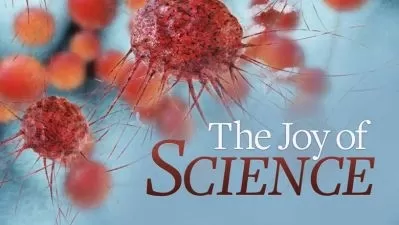Chemistry and Our Universe: How It All Works
Ron B. Davis Jr.
30:17:50
Description
Our world is ruled by chemistry. The air we breathe is nitrogen, oxygen, and trace gases. The clothing we wear is cellulose, protein, or synthetic polymers. When we take to the road, we are propelled by the combustion of hydrocarbons or the reactions inside storage batteries. Look around and everything you see is the product of chemistry—including the sunlight pouring through the window, which originates in the fusion of atoms at the core of the sun.
Chemistry is the study of matter and energy at the scale of atoms and molecules. As the most all-embracing discipline there is, it should be at the top of everyone’s list of must-learn subjects. Unfortunately, chemistry has an undeserved reputation for difficulty and abstraction. Any subject that encompasses as many components as chemistry is going to appear complex. The beauty of delving into the study of chemistry is the discovery of how organized, logical, consistent, and powerfully predictive it becomes—if properly presented.
Chemistry and Our Universe: How It All Works is your in-depth introduction to this vital field, taught over 60 visually innovative half-hour lectures that are suitable for the chemist in all of us, no matter what our background. Covering a year’s worth of introductory general chemistry at the college level, plus intriguing topics that are rarely discussed in the classroom, this amazingly comprehensive course requires nothing more advanced than high-school math. Employing simple concepts, logical reasoning, and vivid graphics that illuminate the wonders of chemistry, these lectures make essential concepts crystal clear. Best of all, this highly interactive approach features extensive hands-on, dramatic demonstrations, from which you will gain extraordinary insight into how the universe works.
Your guide is Professor Ron B. Davis, Jr., a research chemist and award-winning teacher at Georgetown University. With passion and humor, Professor Davis guides you through the fascinating world of atoms, molecules, and their ceaseless interactions, showing you how to think, analyze problems, and predict outcomes like a true expert in the field.
A Chemistry Course Like No Other
Chemistry and Our Universe is ideal for anyone curious about the underlying unity of the material world or interested in such subjects as cooking, painting, metalworking, pottery, auto mechanics, gardening, energy production—there are countless everyday uses of chemistry. The ideas you explore in these lectures truly have universal applications. The course will also appeal to those currently involved in chemistry—from chemistry students in high school or college to health professionals, scientists, managers in industry, and others for whom a refresher course taught by an outstanding teacher will spark new insights.
Anyone who sat through introductory chemistry in a lecture hall will be astonished by what computer-generated graphics and 3-D animations can do to make the subject engaging and understandable Professor Davis worked with The Great Courses production team to create a chemistry course like no other, with features including:
- A virtual reality studio: Professor Davis conducts the course from an augmented reality set, where he interacts with chemical equations, splits atoms, rotates molecules, traces the steps in reactions, highlights key points, and otherwise brings chemistry to life, showing exactly how chemists think about their subject.
- A real chemistry lab: Every chemistry course needs a lab, and Professor Davis often adjourns to a real laboratory to investigate the phenomena he has just been discussing in a lecture. Lab coat, safety glasses, and a hazardous materials permit are required, so don’t try these experiments at home!
- Using kitchen chemistry: You are invited to try these demonstrations, which Professor Davis performs in a kitchen. Most kitchen cupboards are well-stocked with materials for chemistry experiments. For example, a wine bottle can be opened without a corkscrew thanks to a phenomenon called the incompressibility of liquids.
- Expanded reviews and practice: Every lecture ends with a review of the main points covered in that session, often including a challenge problem to help crystallize concepts and let you test your understanding. The accompanying guidebook reprints all of the challenge problems—and more—with worked-out solutions.
Setting the Periodic Table
Walk into any chemistry classroom or open any chemistry textbook and you will see the periodic table of elements. It can also be glimpsed on T-shirts, coffee mugs, sneakers, and even dining tables, especially around universities. Although committing the elements to memory can be the bane of many beginning chemistry students, once you learn the straightforward rules for deciphering it, this compendium of data becomes remarkably simple to use. Under Professor Davis’s expert guidance, you learn to read the many levels of information in the periodic table; see how it predicts properties such as melting and boiling points; and discover why gaps and mysteries in the first drafts of the table by its creator, Dmitri Mendeleev, led to key breakthroughs in chemistry.
Simply by ordering the known chemical elements—the different atoms that constitute matter—by their relative weights, Mendeleev was able to discover patterns among elements with similar properties. Moreover, his early versions of the table proved to be a veritable treasure map, pointing the way to new elements, new properties, and hinting at new atomic features that were yet to be discovered. One of these features turned out to be the electron, which, in its many configurations surrounding atoms, explains the most notable characteristics of the chemical world: the bonding of atoms to make molecules, and the way atoms and molecules combine and recombine in chemical reactions.
Meet Chemistry’s Greatest Thinkers
As you progress through Chemistry and Our Universe, you build an understanding of the many ways in which atoms can be combined to create a huge assortment of materials. By the last part of the course, you will be ready to survey the complex chemistry of entire systems—and you have the opportunity to do so in lectures devoted to the Earth, the oceans, the atmosphere, and the cosmos itself.
Throughout the course, you meet dozens of major figures in the history of chemistry—great scientists such as Antoine Lavoisier, Joseph Priestley, John Dalton, Marie Curie, Svante Arrhenius, Robert Millikan, Alexander Fleming, and Linus Pauling, to name just a few. You learn who they were, the mysteries they attempted to solve, and the innovations that saw their names attached to new principles, equations, or scientific laws. In many cases, you get to see demonstrations that illustrate their important insights, helping to cement key concepts in your mind.
- Predicting reactions: Two experiments—combusting hydrogen gas and dissolving ammonium nitrate—set you thinking about exothermic versus endothermic reactions, as first described by James Joule and Ludwig Boltzmann. Then derive J. Willard Gibbs’s ingenious equation for predicting which direction a reaction will take.
- Gas laws: Robert Boyle’s gas law tells you how to inflate a balloon to full volume with a single breath. With Jacques Charles’s law, you can restore a dented ping-pong ball to its original shape. Also learn the gas laws of Joseph Louis Gay-Lussac and Amedeo Avogadro. Finally, draw on all four equations to derive the famous ideal gas law.
- Historic synthesis: Henry Le Chatelier noticed that a chemical system in equilibrium readjusts to a new equilibrium when disturbed. Observe this effect in the lab, and learn how Fritz Haber exploited it in a groundbreaking application—the synthesis of ammonia from nitrogen and hydrogen, indispensable for making fertilizers and explosives.
- Splitting the atom: Atoms of uranium-235 randomly fission (split apart), releasing two neutrons, which can cause further fissions. With enough neutrons, the reaction becomes self-sustaining, an event first achieved by Enrico Fermi. How does Professor Davis demonstrate a chain reaction safely? With 96 mousetraps and ping-pong balls!
Put on Your ‘Chemistry Glasses”
As befits a subject that deals with the entirety of the material world, your journey in Chemistry and Our Universe covers quite a lot of territory. By the close of Lecture 60, you will have surveyed the map of the discipline, learned the foundational principles, and prepared for deeper exploration in more advanced courses. You will be able to read science news articles with an enhanced understanding, talk shop with chemists, and have informed opinions about the chemistry behind public policy issues such as energy production and climate change.
Above all, you will find that you have acquired a delightful accessory that adds a new dimension to life: ‘chemistry glasses.” Wherever you look—in the medicine chest, in the natural world, in a kitchen drawer, anywhere—you will see things in a fresh and exciting way. For example:
- Medicines: Chemistry tells us how medicines work. Professor Davis follows the stealthy mission of the ibuprofen molecule as it slips into the active site of an enzyme that stimulates inflammation, thereby reducing swelling and pain. You also explore the mechanisms of antibiotics and anti-cancer drugs.
- Poisons, toxins, and venoms: Learn how poisons, toxins, and venoms differ, with examples of each and the chemical reasons for their lethality. In the case of the poison arsenic, the periodic table shows that this atom readily substitutes for phosphorus, which has a crucial role in biological systems.
- Tarnish no more! In his lecture on redox reactions, Professor Davis points out that aluminum is higher on the activity series of metals than silver, which means that the silver sulfide ions of tarnish readily give up electrons to aluminum, making aluminum foil a perfect tarnish remover. Check the internet for tips on how to do it.
- Water: Ubiquitous on Earth and in space, water has a special place in chemistry because of its unique properties, which relate to the molecule’s bent shape and covalent bond. The importance of water is covered throughout the course, from the macro level to the micro—including why steam cleaning is so phenomenally effective!
”Chemistry is Wonderful!”
Early in the course, Professor Davis presents the pioneering research on the chemical bond by one of history’s greatest chemists, Linus Pauling, whose work won him the 1954 Nobel Prize in Chemistry. Pauling is truly a role model for seeing the big picture, because his understanding of events in the atomic realm led him to grasp the tremendous dangers posed by nuclear testing, and his campaign for nuclear disarmament won him a second Nobel Prize, this one for Peace in 1962.
After he retired, Pauling gave a talk at which he couldn’t help promoting his field. ‘Chemistry is wonderful!” he exclaimed. ‘I feel sorry for people who don’t know anything about chemistry. They are missing an important part of life, an important source of happiness—satisfying one’s intellectual curiosity. The whole world is wonderful and chemistry is an important part of it.” After you finish these exhilarating lectures, you’ll know exactly what he means.
More details
User Reviews
Rating
Ron B. Davis Jr.
Instructor's CoursesDr. Ron B. Davis, Jr. is an Associate Teaching Professor of Chemistry at Georgetown University, where he has been teaching introductory organic chemistry laboratories since 2008. He earned his Ph.D. in Chemistry from The Pennsylvania State University. Prior to teaching chemistry at the undergraduate level, Professor Davis spent several years as a pharmaceutical research and development chemist.
Professor Davis’s research focuses on the fundamental forces governing the interactions of proteins with small organic molecules. His research has been published in such scholarly journals as Proteins and Biochemistry and has been presented at the Annual Symposium of The Protein Society. He also maintains an educational YouTube channel and provides interviews and content to various media outlets, including The Discovery Channel.
At The Pennsylvania State University, Professor Davis received a Dalalian Fellowship and the Dan Waugh Teaching Award. He is also a member of the Division of Chemical Education of the American Chemical Society.

The Great Courses
View courses The Great Courses- language english
- Training sessions 60
- duration 30:17:50
- English subtitles has
- Release Date 2023/04/27





